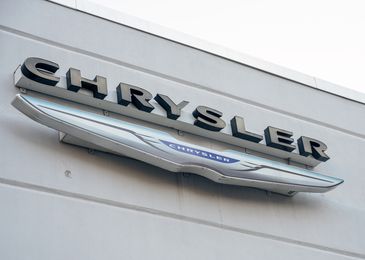How Joe Biden ‘renewed’ the US auto industry
- December 7, 2023
- 0
The scandal between American car manufacturers and the American authorities is brewing faster than acne among teenage fans of Eric “Davidych”. And all because of the tightening of
The scandal between American car manufacturers and the American authorities is brewing faster than acne among teenage fans of Eric “Davidych”. And all because of the tightening of

At the US government level, they’re mulling over an excellent “startup” idea planted by the world-famous National Highway Traffic Safety Administration, also known as NHTSA. For those who don’t know, let us explain: this organization is essentially an analogue of our Ministry of Transport, but unlike the latter, it actually does something. And here’s actually another example of this.
In NHTSA’s 700-page innovation package, the authors propose introducing stricter standards for the Corporate Average Fuel Economy program, which sets fuel efficiency standards. In more detail, we are talking about a system that has been operating in the United States for decades and that controls the average fuel consumption indicator for the model range of a particular car manufacturer.
It is calculated based on the number of miles that can be traveled on one gallon of fuel. According to the novels, it is the makers of trucks and light commercial vehicles, as well as SUVs and pickups, who will “suffer the most pain.” The latter, we recall, have been at the top of the sales rankings in the United States for many years in a row and are the absolute bestsellers of the market.
So: for a car with a gross weight of 3.8 tons or more, fuel consumption would have to increase by 10% annually! For smaller machines the ‘ceiling’ is lower: performance improvement of 4% per year. And for ordinary cars – by 2%. But will Ford, General Motors and Stellantis be able to downshift their models globally? Not at all.
Especially when you consider what kind of units ‘brutals’ like Dodge RAM, Ford F-Series, Chevrolet Silverado, Cadillac Escalade, GMC Sierra and Yukon drive. And this is a V8, no less! However, Jeeps with V-shaped ‘sixes’ under the hood are still ‘gas guzzlers’, and it is probably better to remain silent about muscular ‘pony cars’. What does this mean for car manufacturers? That’s right: huge fines.
By the way, car manufacturer representatives are already preparing a petition addressed to US President Joe Biden with a request not to comply with NHTSA’s legislative initiative, and GM vice boss David Strickland has personally given the presidential administration a reasoned presentation which due to the Inability to refocus production and meet fuel efficiency standards, the company will incur losses of $300 billion.
Fines in the hundreds of billions will hit other companies, although the U.S. National Highway Traffic Safety Administration considers these arguments baseless and speculative. And as arguments, NHTSA representatives cite a report that says car owners will save more than $50 billion a year on fuel.
If Joe Biden signs the new amendments, of course. And he – don’t go to a fortune teller! – will do this with great pleasure. Moreover, the US budget has already lost $130 million to GM and Stellantis in 2023 because the product does not meet current average fuel consumption requirements. Furthermore, it is not common in the US to refuse money.



At the US government level, they’re mulling over an excellent “startup” idea planted by the world-famous National Highway Traffic Safety Administration, also known as NHTSA. For those who don’t know, let us explain: this organization is essentially an analogue of our Ministry of Transport, but unlike the latter, it actually does something. And here’s actually another example of this.
In NHTSA’s 700-page innovation package, the authors propose introducing stricter standards for the Corporate Average Fuel Economy program, which sets fuel efficiency standards. In more detail, we are talking about a system that has been operating in the United States for decades and that controls the average fuel consumption indicator for the model range of a particular car manufacturer.
It is calculated based on the number of miles that can be traveled on one gallon of fuel. According to the novels, it is the makers of trucks and light commercial vehicles, as well as SUVs and pickups, who will “suffer the most pain.” The latter, we recall, have been at the top of the sales rankings in the United States for many years in a row and are the absolute bestsellers of the market.
So: for a car with a gross weight of 3.8 tons or more, fuel consumption would have to increase by 10% annually! For smaller machines the ‘ceiling’ is lower: performance improvement of 4% per year. And for ordinary cars – by 2%. But will Ford, General Motors and Stellantis be able to downshift their models globally? Not at all.
Especially when you consider what kind of units ‘brutals’ like Dodge RAM, Ford F-Series, Chevrolet Silverado, Cadillac Escalade, GMC Sierra and Yukon drive. And this is a V8, no less! However, Jeeps with V-shaped ‘sixes’ under the hood are still ‘gas guzzlers’, and it is probably better to remain silent about muscular ‘pony cars’. What does this mean for car manufacturers? That’s right: huge fines.
By the way, car manufacturer representatives are already preparing a petition addressed to US President Joe Biden with a request not to comply with NHTSA’s legislative initiative, and GM vice boss David Strickland has personally given the presidential administration a reasoned presentation which due to the Inability to refocus production and meet fuel efficiency standards, the company will incur losses of $300 billion.
Fines in the hundreds of billions will hit other companies, although the U.S. National Highway Traffic Safety Administration considers these arguments baseless and speculative. And as arguments, NHTSA representatives cite a report that says car owners will save more than $50 billion a year on fuel.
If Joe Biden signs the new amendments, of course. And he – don’t go to a fortune teller! – will do this with great pleasure. Moreover, the US budget has already lost $130 million to GM and Stellantis in 2023 because the product does not meet current average fuel consumption requirements. Furthermore, it is not common in the US to refuse money.
Source: Avto Vzglyad
Donald Salinas is an experienced automobile journalist and writer for Div Bracket. He brings his readers the latest news and developments from the world of automobiles, offering a unique and knowledgeable perspective on the latest trends and innovations in the automotive industry.